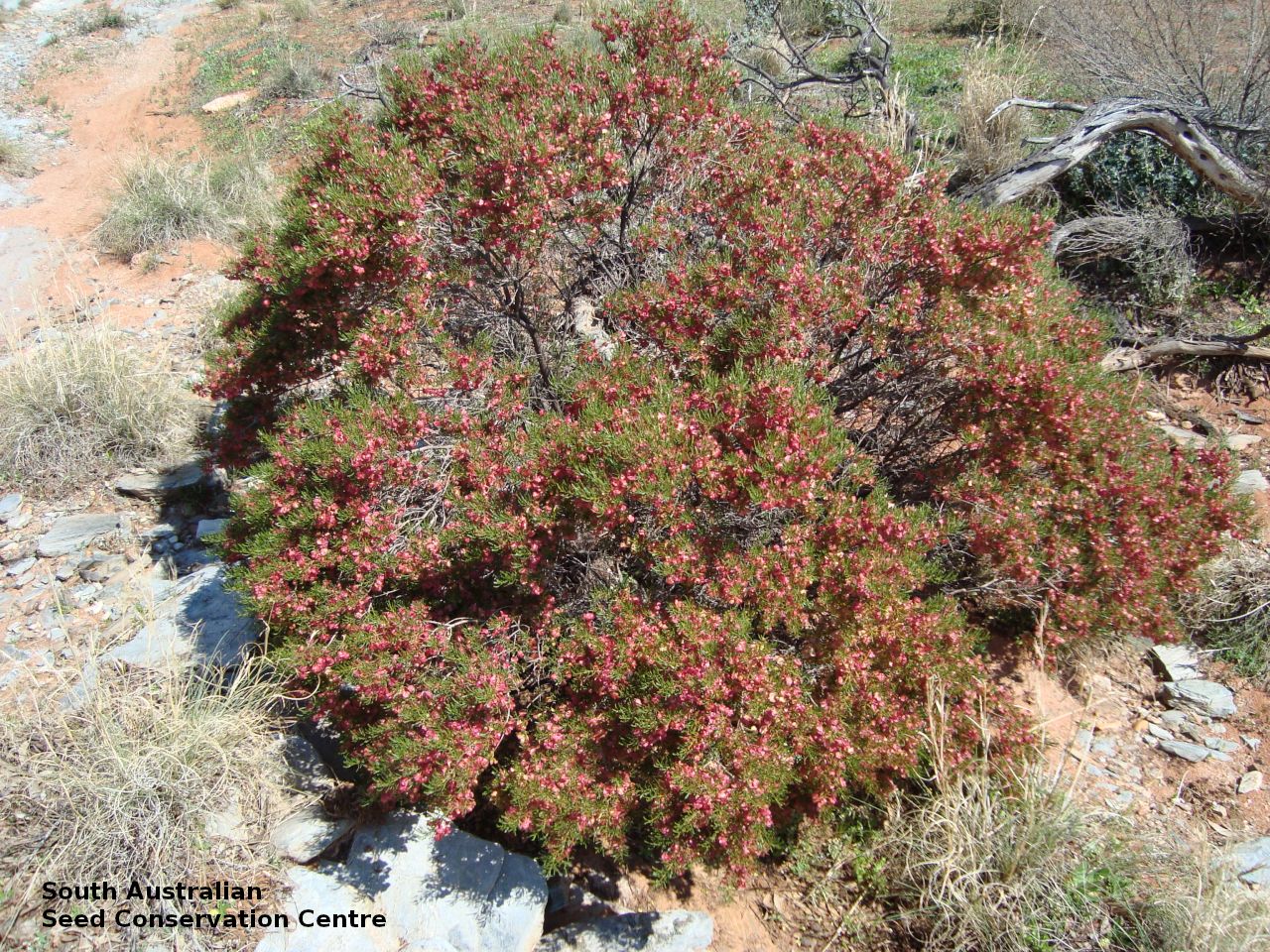
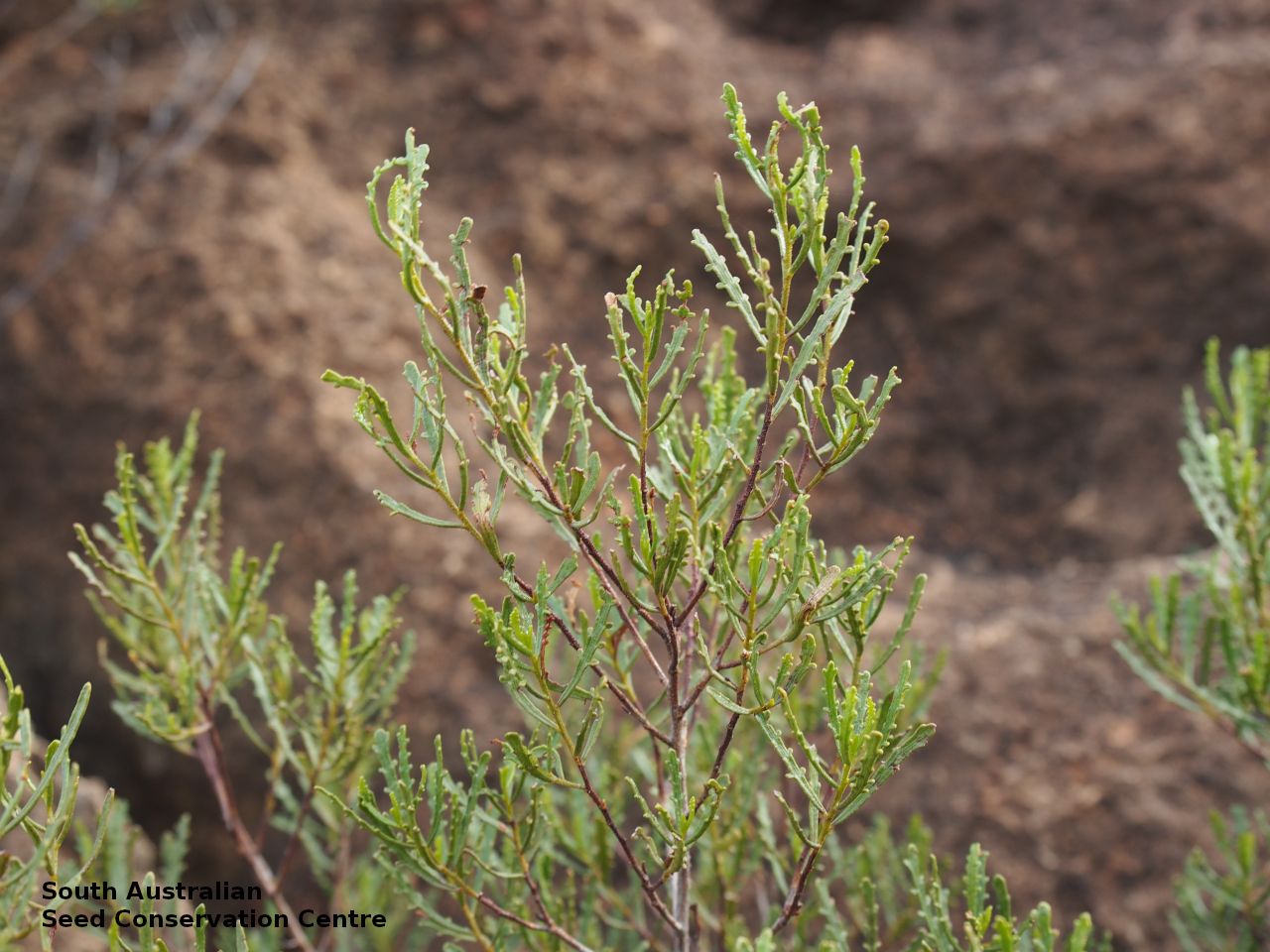
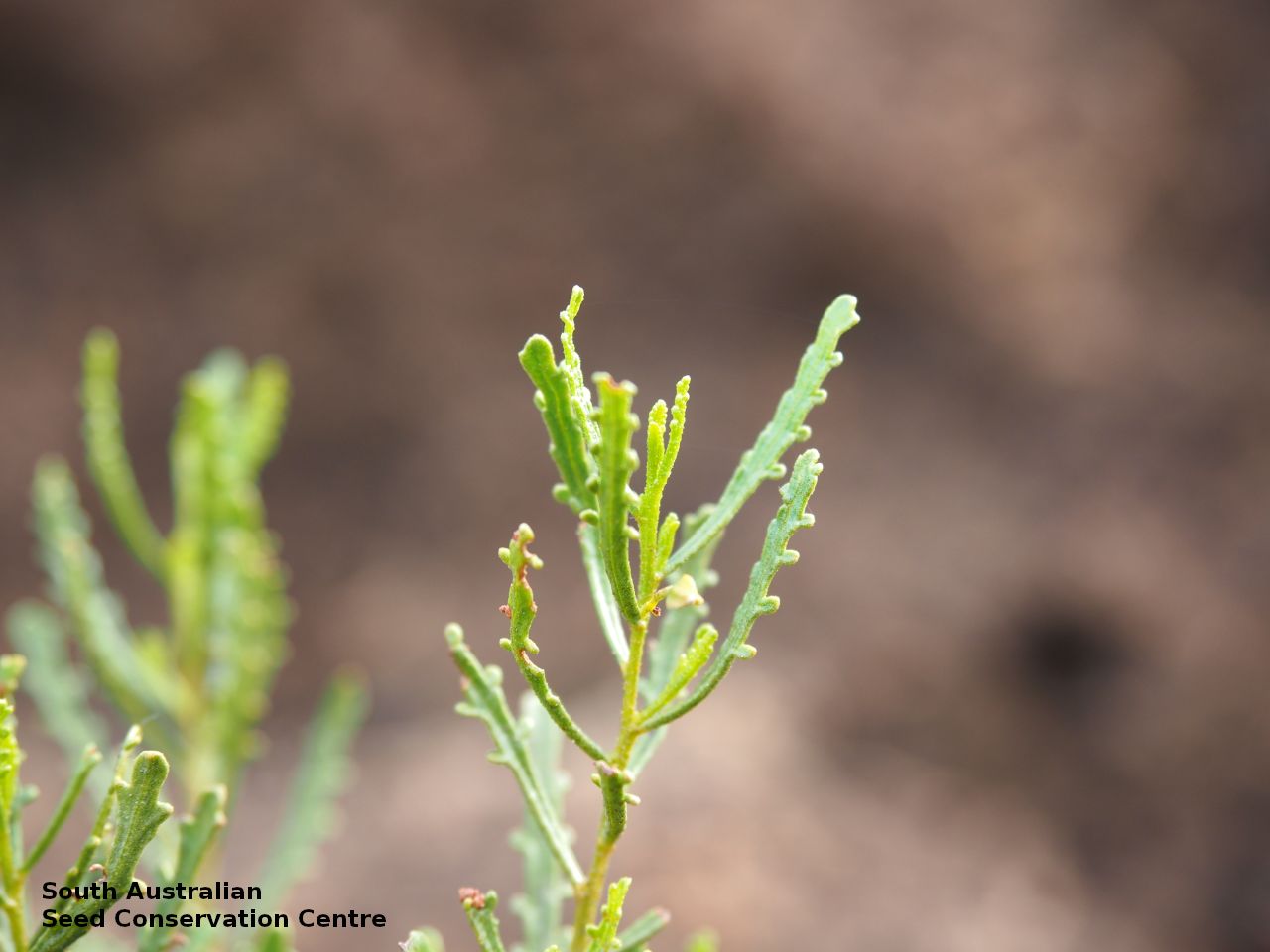
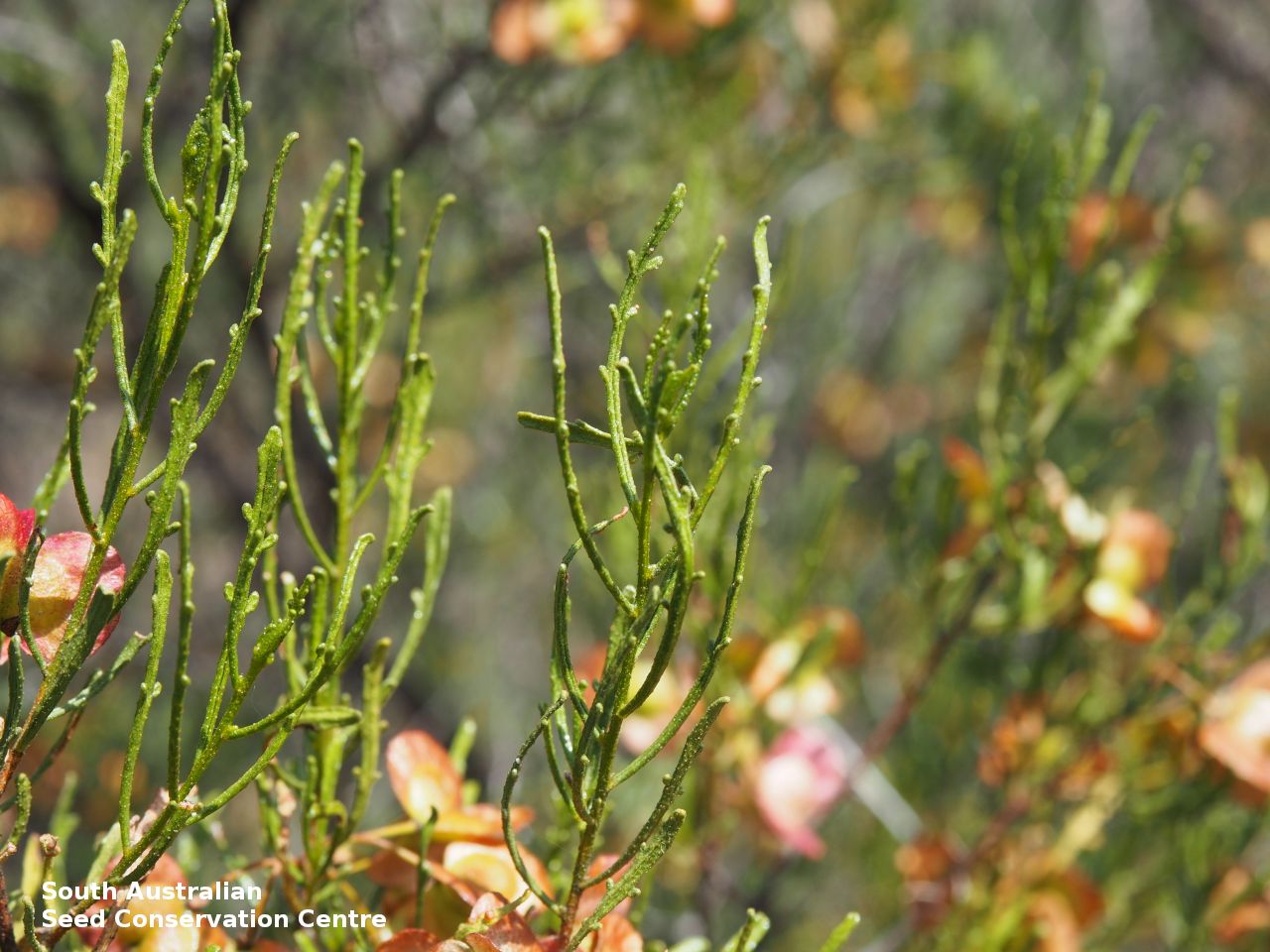

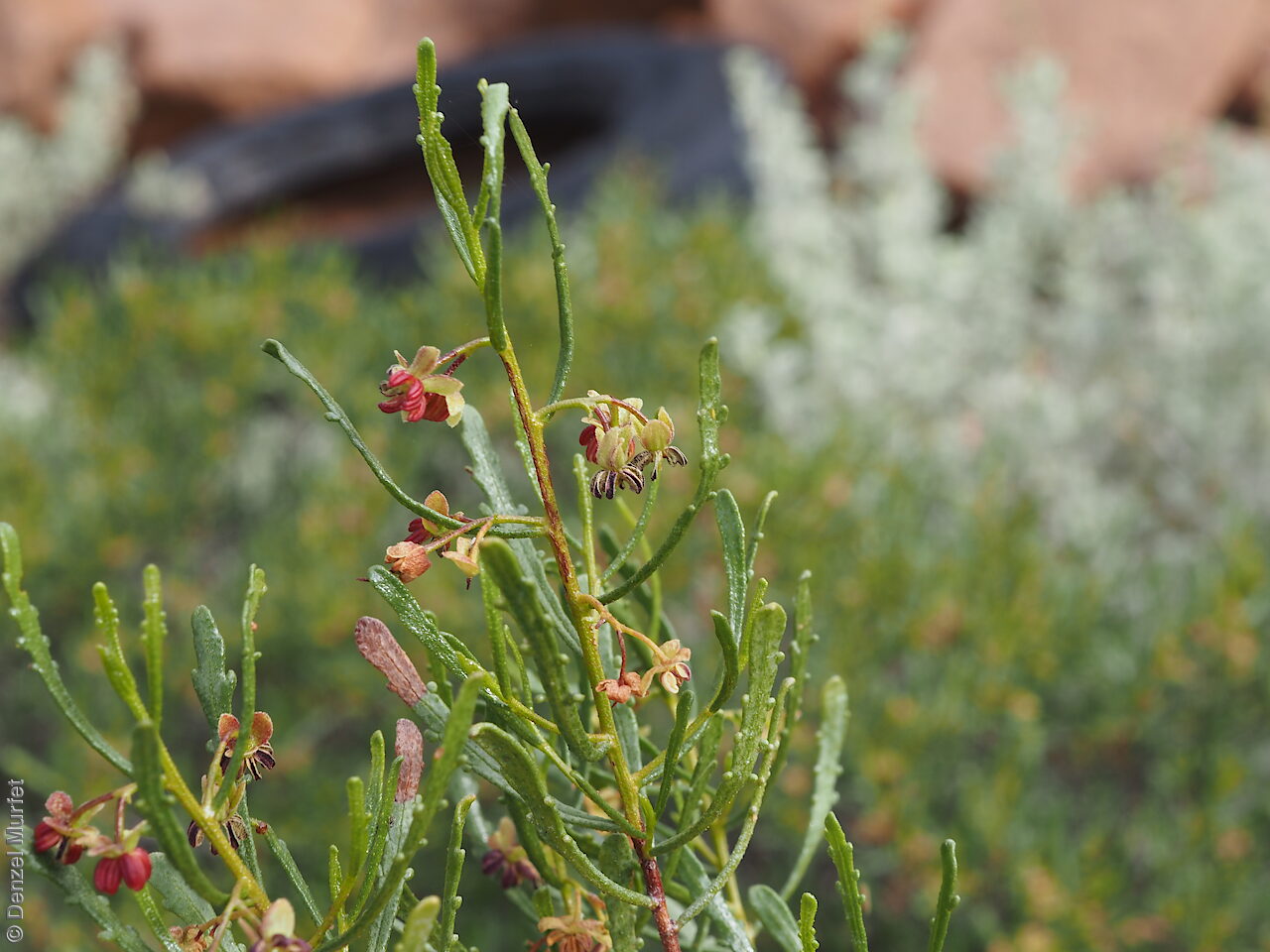
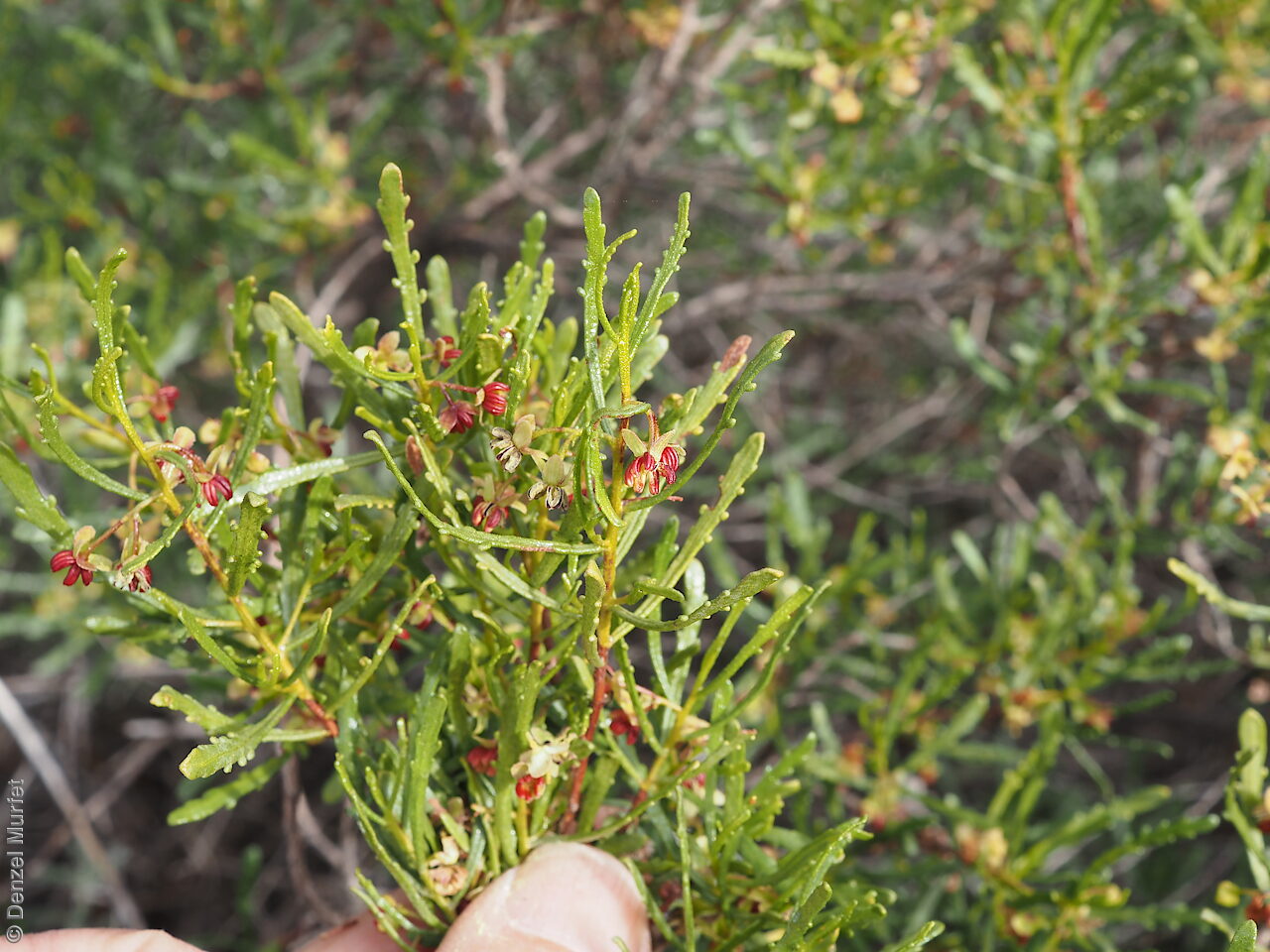
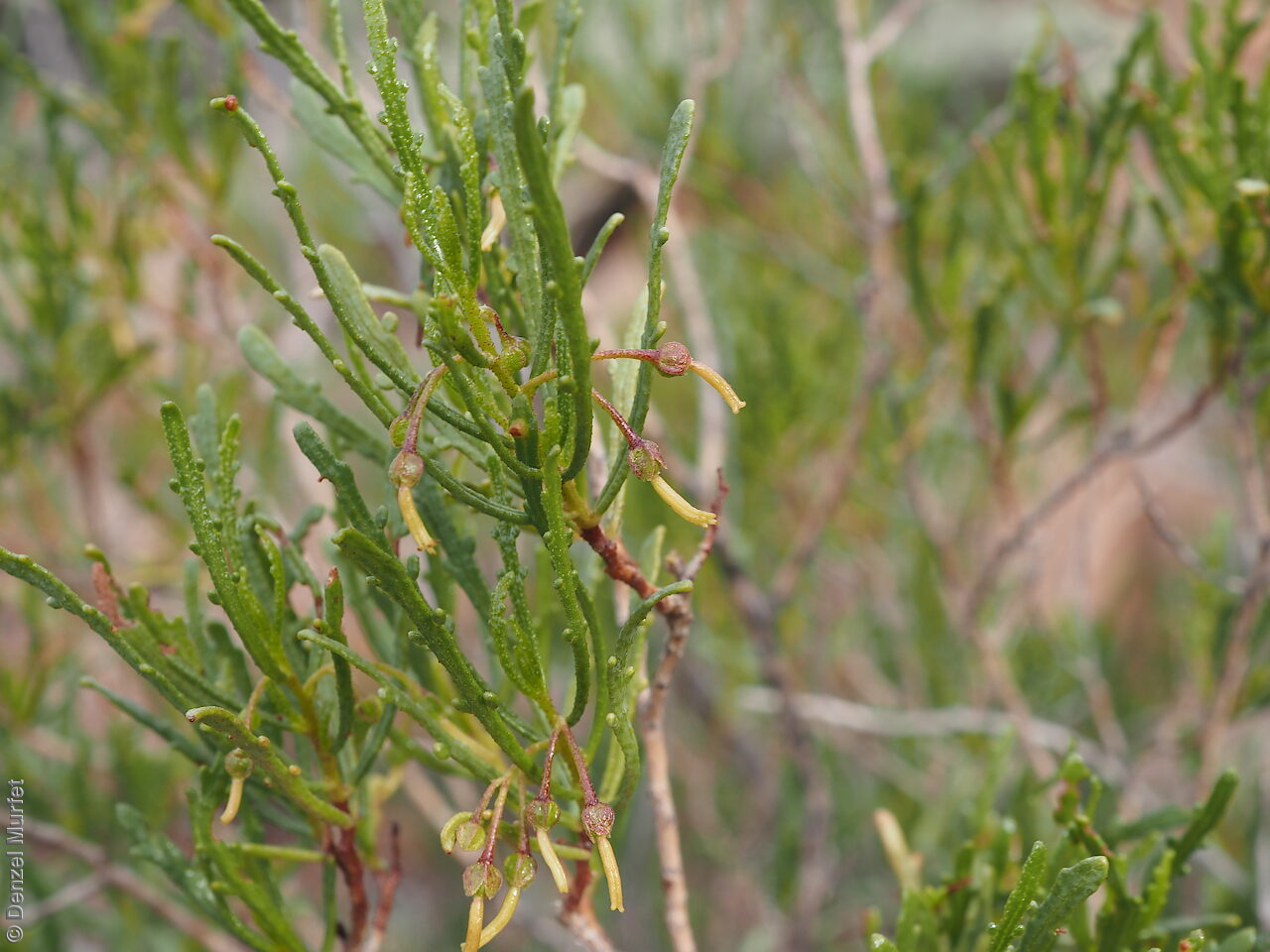

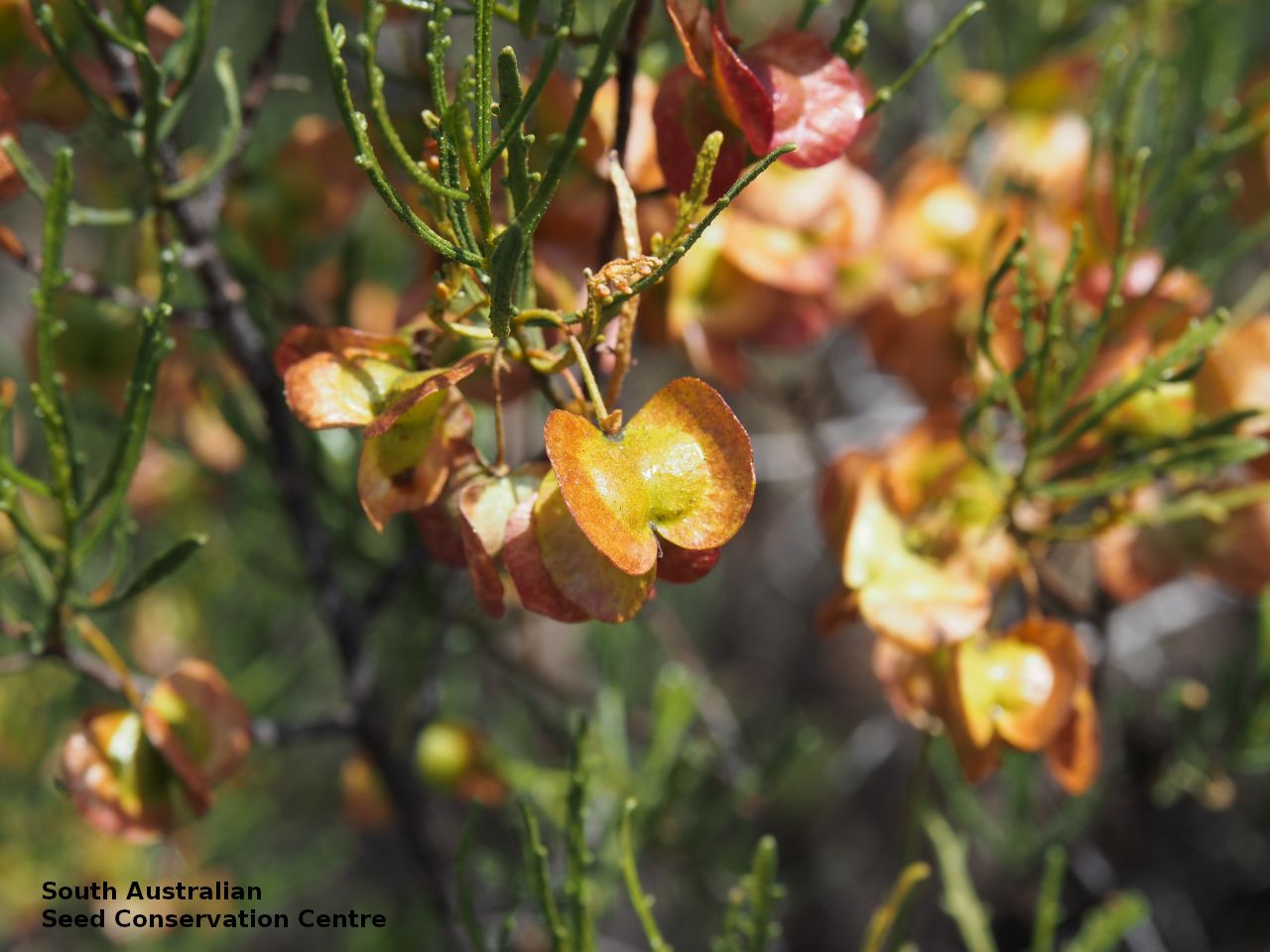
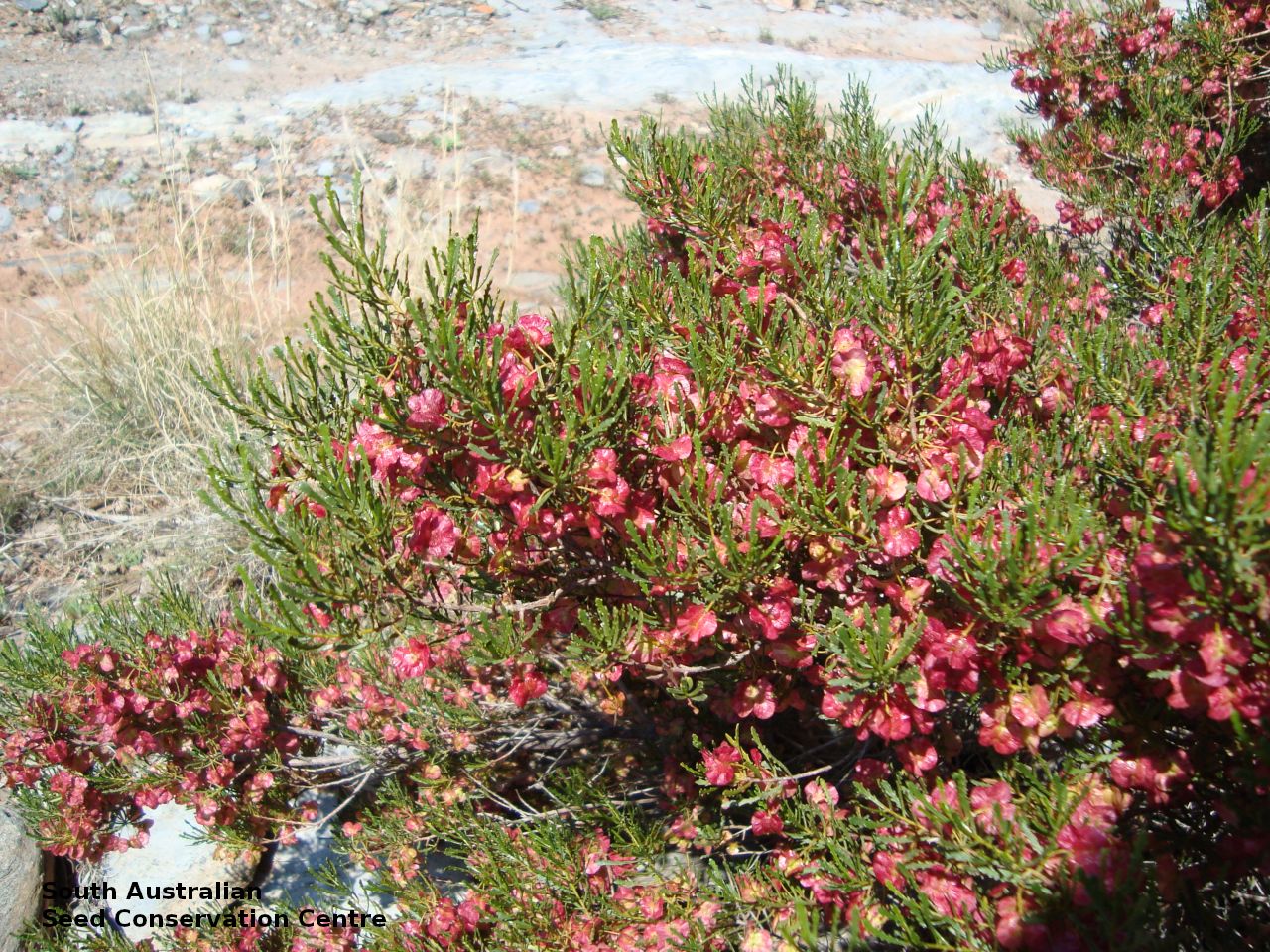
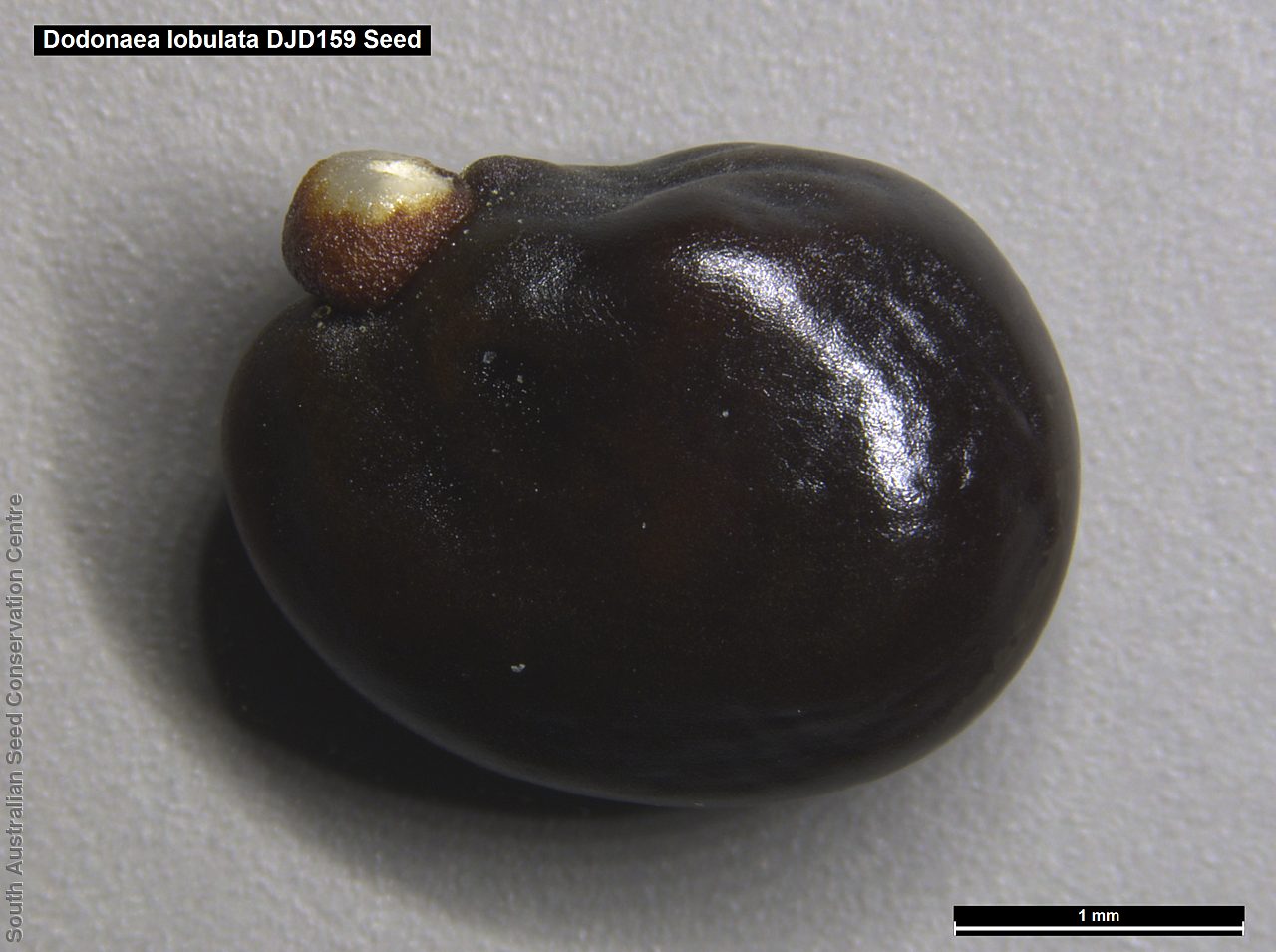


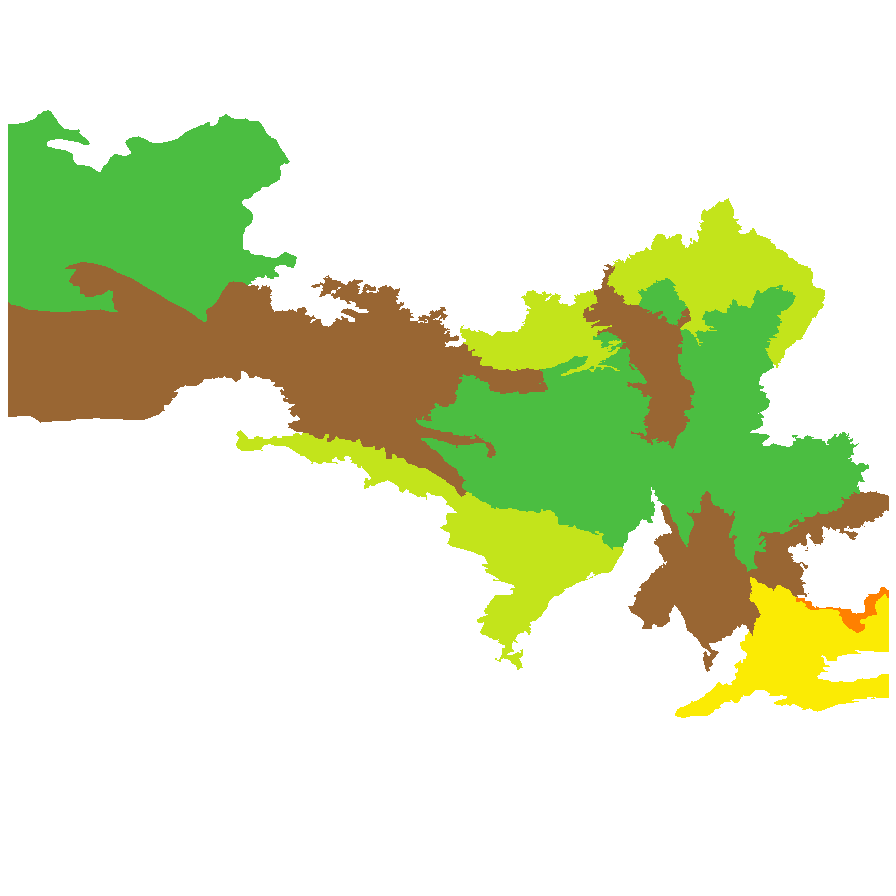
Botanical art
Common names
Lobed Hop-bush
Lobed-leaf Hop-bush
Etymology
Dodonaea named after Rembert Dodoens (1517-1585), a Flemish physician and botanist, also known under his Latinized name Rembertus Dodonaeus. Lobulata means lobed, referring to the leaflets.
Distribution and status
Found in the east-central and far west of South Australia growing on rocky hills and ridges in arid open woodland and shrubland. Also found in Western Australia and New South Wales. Native. Common in South Australia. Common in the other States.
Herbarium regions: North Western, Lake Eyre, Nullarbor, Gairdner-Torrens, Flinders Ranges, Eyre Peninsula, Northern Lofty, Murray, Yorke Peninsula
AVH map: SA distribution map (external link)
Plant description
Dioecious erect shrub to 3 m high. Leaves either irregularly pinnatifid or irregularly 2–12-lobed, or rarely leaf entire; leaf blade linear to linear-oblanceolate, obtuse; to 5.5 cm long and 2.5 mm wide, glabrous to sparsely hairy; lobes 1–1.5 mm long, rarely to 5 mm; apex obtuse or rounded. Flowers 2 or 3 together, axillary; sepals 3 or 4, stamens 6-8. Flowering between May and July. Fruits are red-brown capsules 3- or rarely 4-winged, to 21 mm long and 15 mm wide; glabrous with wings extending from the base to the apex of the capsule. Seeds are black ovoid seed to 3 mm long and 2.5 mm wide with a short brown aril. Seed embryo type is folded.
Seed collection and propagation
Collect seeds between August and November. Collect capsules that contain hard black seeds, usually when capsule is turning red or brown. Place capsules in a tray and leave to dry for 1 to 2 weeks. Then rub the capsules by hand to dislodge the seeds. Use a sieve to separate the unwanted material. Store the seeds with a desiccant such as dried silica beads or dry rice, in an air tight container in a cool and dry place. From one collection, the seed viability was high, at 80%. This species has physiological dormancy that needs to be overcome for the seed to germinate (e.g. nicking the seed coat).
| Location | No. of seeds (weight grams) | Number of plants | Date collected | Collection number Collection location | Date stored | % Viability | Storage temperature |
|---|---|---|---|---|---|---|---|
| BGA MSB | 74,600 (474.6 g) 74,600 (474.6 g) | 100+ | 31-Oct-2005 | DJD159 Gairdner-Torrens | 8-Aug-2006 | 80% | -18°C |
Number of plants: This is the number of plants from which the seeds were collected.
Collection location: The Herbarium of South Australia's region name.
% Viability: Percentage of filled healthy seeds determined by a cut test or x-ray.